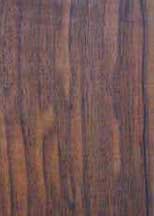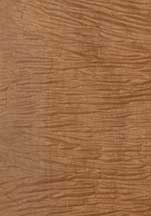 Over
the years I have had the opportunity to play the instruments
of many of the great contemporary makers as well as those of the
historical makers. I have found that “student” instruments
often lack balance and have other deficits that contribute to the
player’s inability to hear the definition and nuance of the
individual strings, i.e., muddiness. This is often coupled with
a heavy club-like neck. An unbalanced instrument directly affects
how a student builds a uniform stroke. Dead or hot spots demand
a control beyond the ability of the average player to overcome. Over
the years I have had the opportunity to play the instruments
of many of the great contemporary makers as well as those of the
historical makers. I have found that “student” instruments
often lack balance and have other deficits that contribute to the
player’s inability to hear the definition and nuance of the
individual strings, i.e., muddiness. This is often coupled with
a heavy club-like neck. An unbalanced instrument directly affects
how a student builds a uniform stroke. Dead or hot spots demand
a control beyond the ability of the average player to overcome.
Students need to be able to hear the subtle nuance of timbre, color,
and vibrato in their development stage, and a poor neck design means
all fingering is more difficult and less clear. As a player ascends
the ladder of learning to the performance level, need for quite
a different instrument develops. The instrument needs to be “hotter”
and increasingly more brilliant in the high register. This allows
the audience to hear all the instrument’s nuance. At the same
time this instrument will maintain projection, dynamic range, tone,
and color, while the player still has control of the musical dynamics
learned on an instrument that was more accessible to the player’s
ear.
 My
goals in building a high-grade instrument were first oriented to
the professional-level player and then to the upward-moving student,
who requires many of the characteristics found in a professional
instrument—easily accessible to the ear—but requiring
a different voicing or brace pattern. From this beginning, the first
problem of balance was attacked. Building on the framework of the
great makers, i.e., Ramirez, Hauser, Fleta, and Simplicio, I started
building and correcting archings, brace patterns and voicings while
continuing to assemble in the finest non-tensioning building techniques. My
goals in building a high-grade instrument were first oriented to
the professional-level player and then to the upward-moving student,
who requires many of the characteristics found in a professional
instrument—easily accessible to the ear—but requiring
a different voicing or brace pattern. From this beginning, the first
problem of balance was attacked. Building on the framework of the
great makers, i.e., Ramirez, Hauser, Fleta, and Simplicio, I started
building and correcting archings, brace patterns and voicings while
continuing to assemble in the finest non-tensioning building techniques.
While we continue to offer instruments built on the Torres, Hauser,
and Ramirez patterns for the historical significance and unique
sound these makers’ instruments produced, Woodsound Studio
also offers three patterns built upon our insights. All of our models
are built with the same brace patterns and Old World assembly processes.
The distinctions are found in the choice of materials, trim, the
amount of time spent on the voicings, and the type of neck construction.
Neck Design
The Master models and Model 1a have in common a neck that is very
complicated to build, beautiful to look at, but most importantly,
designed to increase power and sustain. First let me say all models
have an asymmetrical neck design, that is to say, the bass side
is thicker than the treble side. Due to the shape of the human hand,
the thumb and index finger when playing a full barre chord are not
parallel and need a slightly thicker and non-parallel surface to
achieve correct leverage. Also, the small barre across two or three
strings needs a treble-side neck edge design that is more sloped,
in order to achieve a proper seal, hence an asymmetrical design.
The neck moves microscopically as a string is plucked, and the
more one can damp the neck movement, the more output the top gains
in movement. The next consideration in neck design then, is how
to prevent the amount of string vibration lost in the movement of
neck. (A simple test to prove this concept is to clamp a weight
to your guitat neck and listen to the difference in tone and power.)
The Master and Model 1a necks are reinforced with twin ebony laminates,
set on a taper to stiffen the neck and prevent this loss. The Model
1 and Standard Model instruments have carbon fiber inserts that
act as stiffeners and will be added to the Conservatory models on
request for an additional fee.
|
This illustration shows a cross-section of
the asymmetrical design of the neck, which allows for a better
and easier small barre and better leverage for the full barre.
This also illustrates the Model 1a neck with its two ebony verticals
for strength and sustain. |

Above, necks awaiting carving. The front
two are for standard models, while the rest are for Model
1a and Master instruments. To the right are carved necks
with fingerboards, ready to be installed on their bodies.
|
|
 In
addition, the Master, 1a, 1 and Standard models all have handmade
rosettes, tie blocks, and/or other marquetry purflings or inlay
strips. In
addition, the Master, 1a, 1 and Standard models all have handmade
rosettes, tie blocks, and/or other marquetry purflings or inlay
strips.
Balance, balance, balance, I hate to play an instrument where I
have to adjust my technique for balance rather than play the music.
Lack of balance in instrument may be caused by many factors—materials,
brace design and voicing, pull of string on the bridge. Too low
a saddle can produce a sweet tone, but is often lacking in power.
Too tall a saddle, and one gets a brittle sound. All this is controlled
by the angle of neck set to body and the action height. Now, here
is a critical component—on a fingerboard of uniform thickness,
the action must be increased to allow for the softer bass strings
to swing from equalibrium and not hit the fret. Increased saddle
height on the bass side increases the volume of those strings, throwing
the instrument out of balance. In order to eliminate this problem,
I plane the fingerboard on the bass side, from nut to end, in a
downward taper to set the action with the fingerboard rather thanwith
the saddle. The even-height saddle, along with an angled saddle
slot, in combination with intelligent brace voicings produces an
instrument with superior balance and correct intonation.

Old growth Brazilian rosewood, imported in the 1930s,
used for back and ribs on the Master Model. |
 The
Master Models The
Master Models
These models use the most exquisite and exotic materials on earth.
The supply of fine-quality tonewoods has diminished to the point
that very few of these instruments can ever be produced. We have
a small supply of 100-year-old Brazilian rosewood (Delbergia
Nigra), the rarest of all rosewoods. Hence, we couple this
with the very few pieces of European spruce that meet this exacting
standard. Various model instruments built of these precious materials
are priced individually, with a starting price range of $10,000 in
a lacquer finish. For French polish on the top, the price starts
at $10,750.
The Elite Master Grade is built with the finest of the woods we
can find, voicing is done over a period of weeks, braces changed
or moved until I am fully satisfied with the end result. The body
is then French polished in its entirety to a mirror surface approxamately two thousands of an inch thick with a golden, buttery shellac and aged for up to three months
before stringing. Price range is $15,000 to $20,000.
The Model 1a
 The
Model 1a Classic is the top of my Indian rosewood line of concert
guitars and is available in either a German Silver Spruce or Western
Red Ceder top. I produce this model in a number of different brace
patterns to accommodate many players’ styles and needs. I
break this down into two broad categories of instruments. Those
built to be played on stage have a harder, more brittle tone, dynamic
range, and loudness that is determined by projection. The second
category is suited to smaller rooms and the player’s personal
needs, i.e., warmer tone and greater color, clarity, dynamic range,
and loudness that is determined by presence. The
Model 1a Classic is the top of my Indian rosewood line of concert
guitars and is available in either a German Silver Spruce or Western
Red Ceder top. I produce this model in a number of different brace
patterns to accommodate many players’ styles and needs. I
break this down into two broad categories of instruments. Those
built to be played on stage have a harder, more brittle tone, dynamic
range, and loudness that is determined by projection. The second
category is suited to smaller rooms and the player’s personal
needs, i.e., warmer tone and greater color, clarity, dynamic range,
and loudness that is determined by presence.
As a wood user and dealer to the trade, I search the world to find
and buy the finest materials in existence. The Model 1a guitars
are built of the most choice of these materials, featuring fully
mitred purfling trim, rosewood bindings, handmade rosettes, many
more hours spent in the brace pattern voicing, and, as the “a”
designates, a neck design sporting a double ebony laminate. This
serves both as a point of beauty and a stiffener, yielding greater
power and sustain and a slimmer, more playable neck. The finish
options are a completely lacquered finish or lacquered back, sides
and neck, with a French-polished top, or as an entirely French-polished
finish, or a varnish finish.
See options list for polish
and varnish pricing. ($8500)
 The
Model 1 The
Model 1
An excellent grade of cedar or European spruce, fine rosewood back
and sides, voiced for a subtle blend of stage presence and player
intimacy: clear, brilliant highs, full of overtone series dropping
away as soon as the note is released, eliminating the muddiness
associated with most instruments in this price range. The trim is
all wood and fully mitered on both back and sides, creating a stunning
individual paneled appearance. All appointments and brace pattern
options are available except the 1a neck. ($7500)
The Standard Model
Fine quality cedar or European spruce top, rosewood or European
flamed maple back and sides, gloss finish, wood trim, and more hours
slated for the voicing process. ($6500)
The Conservatory Models
The Conservatory I - Solid black or claro walnut
back and sides, cedar or German spruce top, ebony fingerboard, wood
binding, and a gloss lacquer finish. This model is braced and voiced
to be clear, brilliant, loud, and most of all, balanced, with a
large degree of the soundwaves rolling off the top towards the player’s
ears. ($4500)
The Conservatory II - As above, rosewood or maple
body and a step up in the quality of spruce top, gloss finish. ($5500)

Black Walnut |

Claro Walnut |

Curly Maple
|

Indian Rosewood
|
Go to the
Steel Strings page.
| | | |
| |
| |
|

